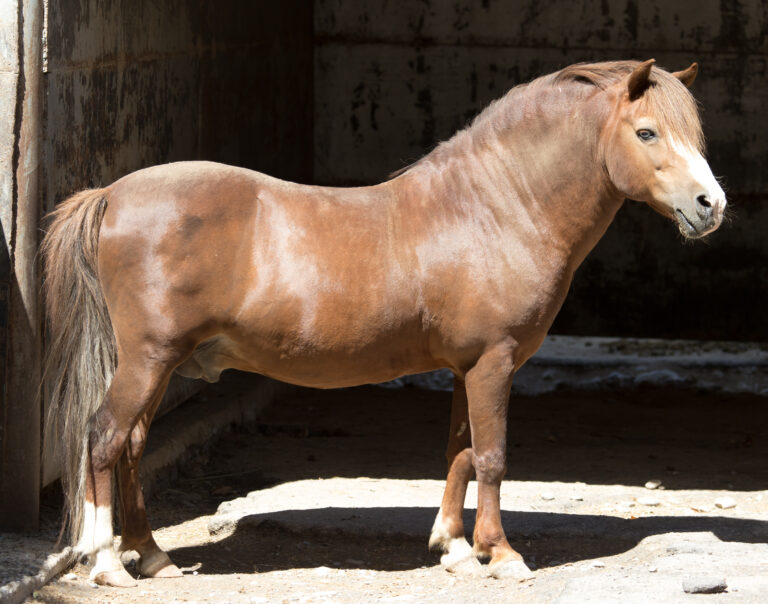 Credit: Courtesy Animal Arts
Credit: Courtesy Animal ArtsIf you’re fortunate enough to be shopping for a building site for your equine veterinary business, then this is both an exciting time and a time for a lot of hard work.
Real estate decisions are often complicated, but those that involve equine veterinary businesses are especially tricky because of several factors, including the market, the amount of land that is required and the necessary attributes of the land. In this article we will offer you a step-by-step process so you can be sure you’ll make a great decision on a location.
Study the Market and Your Project
To begin the search for a location for your business, start with a market study. If you already have an existing ambulatory or small, office-based business and you’re looking to keep your established clientele, this will certainly guide your selection of a property, as the site must be in a convenient location for your clients.
However, if you’re establishing a new practice, look to avoid saturated markets. In the 2012 Veterinarian Workforce Report from the AVMA, equine practice was identified as the market segment where “excess capacity” of veterinary professionals relative to demand was the most pronounced. In 2012, the AVMA calculated the approximate demand for an equine practitioner to be one FTE (full-time employee) per 1,630 horses. This would vary based on the type of practice, but the bottom line is that a new practitioner might have some market research to do and a few years of establishing a client base in order to build a steady enough business to afford expansions to a facility with multiple practitioners.
Define Your Land Purchase Budget
Part of planning for a major project is to do some work to create a budget for each of the major components. For the hospital itself, you’ll need to gather real, current data on costs, as they have changed a lot since the recession. Ask knowledgeable professionals and also your colleagues who have recently constructed hospitals.
Additionally, your building budget should include another 30% of the construction cost for soft costs, which include equipment, professional fees and contingencies. Land purchases are added on top of all of these costs.
If you have done some planning ahead of time, you will already have tested the viability of your project and helped to define your limitations for spending on any one area, such as the land purchase.
Is It Necessary to Build New?
The first step is to think about your project creatively. Before purchasing a lot and building a business from the ground up, consider whether you could more easily find a property that already has improvements. We mention this because during the recession, many horse properties went on the market. Many are good properties that can be reused. This is a good approach if you’re planning a small hospital with just a few rooms. For example, a portion of a well-built barn could be separated and retrofitted to be a simple equine clinic.
If you think the retrofit idea has a lot of potential for your business, as it has for others, and you have found an interesting property, enlist the help of a design professional and builder to look into the viability of reusing the infrastructure at that location. These are the items that you should pay careful attention to:
• size and capacity of existing utilities
• structural capacity and the general safety of existing structures
• whether the hospital project would require bringing the existing building up to a commercial code
As a case study, Dr. Amy Jergens of Gill, Colorado, took the retrofit approach when creating a hospital for her practice. She re-used a simple prefabricated barn structure. This might not work well in all climates, but it is reasonable in a dry Western climate such as Colorado, where even a simple structure can have a long lifespan.
Choosing the Land
Assuming that many people will want to build from the ground up, here are the factors that are most important for a land purchase in general, and equine practice specifically: Find the right size property. It is important to know how much land you’ll need for building your hospital. While the hospital itself might not be very space consuming, equine veterinary businesses tend to grow over time, so it is important not to squish yourself into a box on day one.
The property should be 10 times larger than the square footage for buildings, at a minimum. For example, with 10,000 square feet of hospital and barn area, your minimum property would be at least 2ó acres, more or less. This is because your parking and drives will easily eat up another 10,000-20,000 square feet, and you’ll need some room for turnout. You will also need room in most cases for septic fields, lunging areas or arenas, storm water collection and maintenance areas. We have certainly designed horse businesses on tighter sites, but you’ll need help from a professional for master planning the property if you’re starting out with something smaller than this basic rule of thumb. Look for restrictions. When we talk about the size of a property, we mean the useful area of the property. If your site has multiple restrictions, then it might not be as developable as it seems to be. Here are the things to watch out for:
• easements
• setbacks from property lines
• road right of ways
• flood plain (If you have a flood plain on the property, seek help immediately from a professional to determine what, if anything, you can build.)
• wetlands (Generally you will be required to be a certain distance away from a designated wetland, which would restrict the property usage.)
A land surveyor can help you determine whether or not you have any of the above issues on your site. If you do, map out the restricted areas on a property map so that you can see the remaining useful area. Calculate the square footage of the remaining useful area to ensure it is going to be sufficient to support your hospital project. Watch out for steep slopes. This is especially prevalent in some states, such as North Carolina. A steep slope will increase your construction costs and might limit your development opportunities. A rule of thumb to remember: When you’re looking at a property and see a slope, it is generally steeper than your eye thinks it is. Be informed about planning and zoning. Buy a property that is properly zoned for equine hospital use. Note that even if the property is zoned agricultural, equine veterinary hospitals normally are a commercial use. You might find that zoning is of no issue at all in the more rural areas where you are most likely looking for a property, but you cannot assume that this is the case until you check.
If planning and zoning ordinances require a review process, be aware that in addition to normal constraints such as required setbacks or allowed uses, planning and zoning regulations can dictate landscaping, site access, availability of utilities, facility appearance and funding of street or utility improvements. In most jurisdictions, applying for a variance is a time-consuming and costly process, with no guarantees of success.
The Next Steps
Now that you have found an appropriately sized property that doesn’t have undue restrictions or improper zoning, it is time to start some serious due diligence work on the parcel. You will need to do the following: Plan for utilities. Many horse facilities are located in rural areas away from water and sewer services. If this is the case, talk with a well contractor to test the water and get the cost of drilling a well. If city sewer and water hookups are available, review the cost of these services in advance. It can be expensive to pull utilities to a project site. Purchase a Geotechnical Report. It can be very expensive to blast out bedrock or remove expansive clay. Avoid traps by commissioning a soil report that contains foundation recommendations before you finalize the purchase of a site. Obtain an environmental assessment. Before you construct a hospital, you will need assurance that the site you select does not have any hidden environmental challenges. The best way to do this is to commission a basic environmental assessment for the site. In most cases, a Level One Environmental Assessment can identify environmental conditions that might adversely affect the development of your site.
Take-Home Message
A lot of what we have discussed in this article is practical advice about various technical assessments of potential project sites. In the end, you’ll need to come back to some basic gut feelings, as well as some more creative assessments of the property.
Do you like the way it is oriented? Does it have nice, south-facing exposures that will make for a pleasant work environment? What are the views? Who are your neighbors? Did you like the property when you first saw it? Do you like it now? You will be spending a lot of time at this location, so it should capture a feeling for you that is good.
Study all aspects of your land purchase and you won’t regret it, as the right site will set the stage for a successful project.
Animal Arts specializes in the design of animal care facilities. The company combines technical expertise with emerging trends in marketing to provide creative solutions for veterinarians. Some past work includes Tryon Equine Hospital, Harmony Equine Center for the Dumb Friends League and the Equine Health Center-University of Adelaide.

![[Aggregator] Downloaded image for imported item #18216](https://s3.amazonaws.com/wp-s3-equimanagement.com/wp-content/uploads/2025/09/30141837/EDCC-Unbranded-8-scaled-1-768x512.jpeg)
![[Aggregator] Downloaded image for imported item #18711](https://s3.amazonaws.com/wp-s3-equimanagement.com/wp-content/uploads/2025/10/20105749/EDCC-Unbranded-14-scaled-1-768x512.jpeg)

